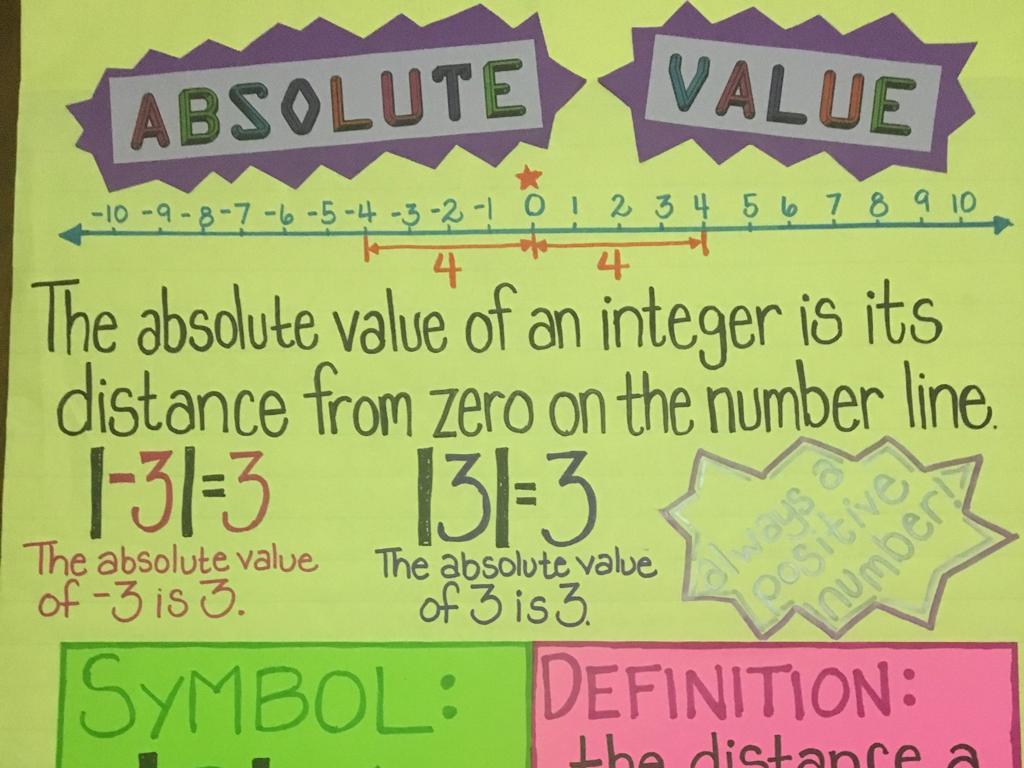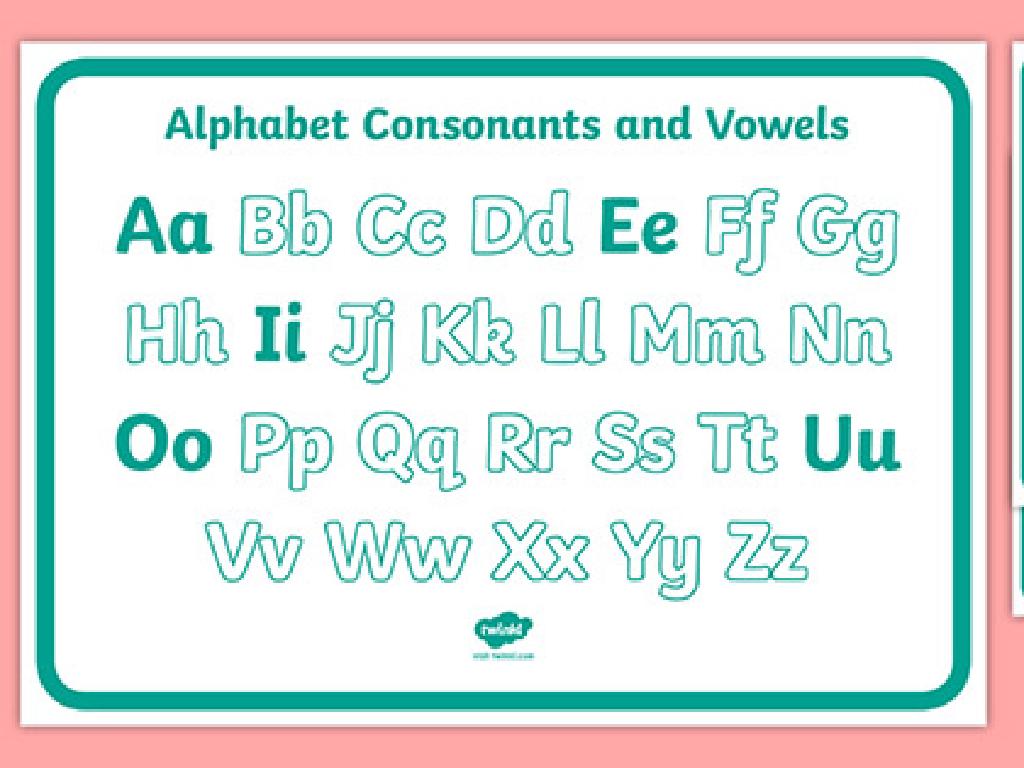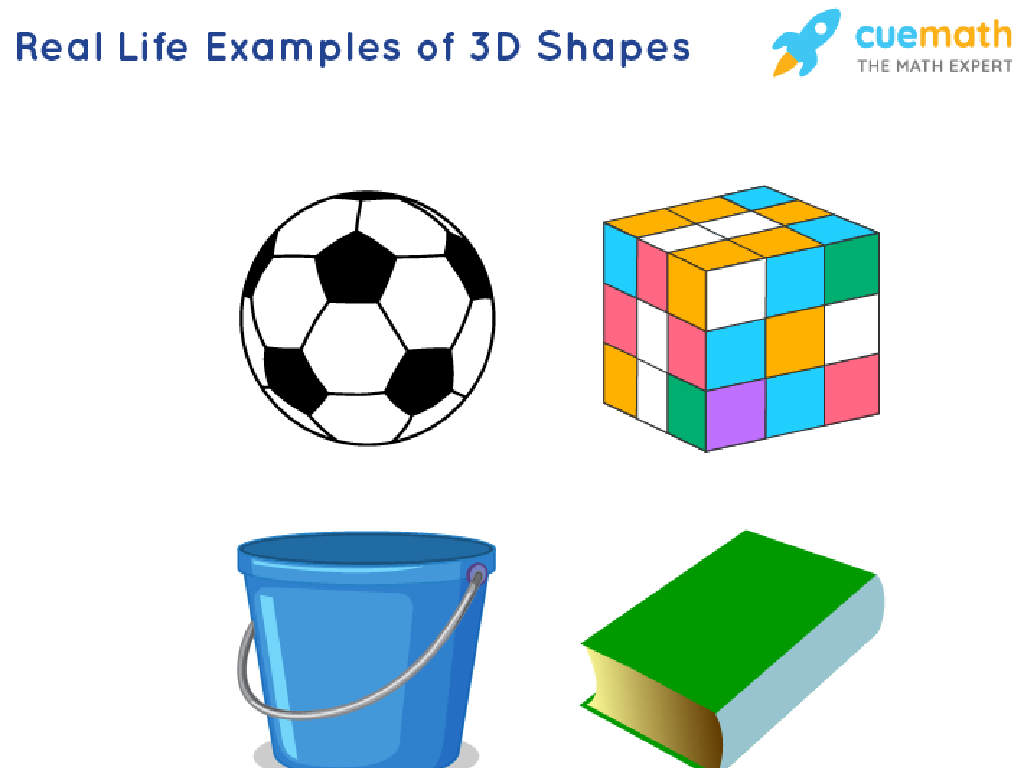Which Consonant Blend Does The Word End With?
Subject: Language arts
Grade: Kindergarten
Topic: Consonant Blends And Digraphs
Please LOG IN to download the presentation. Access is available to registered users only.
View More Content
Welcome to Consonant Blends!
– Learning about consonant blends
– What are consonant blends?
– Two or more letters together that each make a sound, like ‘st’ in ‘last’
– Examples of consonant blends
– ‘st’ as in ‘last’, ‘nd’ as in ‘hand’, ‘lk’ as in ‘milk’
– Practice identifying blends
– We’ll listen to words and find the blends at the end
|
This slide introduces the concept of consonant blends to Kindergarten students. Begin by explaining that consonant blends are groups of two or more consonants where each letter’s sound can be heard, like the ‘st’ in ‘last’. Provide clear examples using common words that the children may already know, such as ‘hand’ and ‘milk’. Engage the students with a fun activity where they listen to words and try to identify the consonant blends at the end. This will help them understand how blends work and how to recognize them in words they hear and use.
Consonant Blends in Words
– What’s a consonant blend?
– When 2 letters like ‘st’ in ‘nest’ come together, both sounds are heard.
– Blends can start or end words
– ‘st’ in ‘nest’ or ‘sk’ in ‘desk’ show blends can be at the end too.
– Blends are smooth, not separate
– Say ‘st’ fast in ‘nest’, not ‘s-t’. It’s like they’re holding hands!
– Practice with ending blends
– Find words that end with ‘st’, ‘sk’, ‘nd’ like ‘nest’, ‘desk’, ‘hand’.
|
This slide introduces the concept of consonant blends to Kindergarten students. Emphasize that while we hear both consonants in a blend, they are pronounced together smoothly without separation. Provide examples of words with consonant blends at the beginning and end, and practice saying them aloud with the class. Encourage students to listen for the blended sounds and to practice with words that have common ending blends. This will help them recognize patterns in word pronunciation and spelling.
Listening to Consonant Blends
– Listen to words with blends
– Find the blend at the end
– Example: ‘nest’
– The blend is ‘st’ in ‘nest’
– Example: ‘hand’
– The blend is ‘nd’ in ‘hand’
|
This slide is designed to help Kindergarten students recognize consonant blends at the end of words through listening exercises. Play audio clips of words with clear ending blends and ask students to listen carefully. After each word, pause to give students a moment to identify the blend they heard. Use words like ‘nest’ and ‘hand’ as examples, emphasizing the ending sounds ‘st’ and ‘nd’. Encourage students to repeat the words and blends after you. For an interactive class activity, consider having students come up with their own words that have consonant blends at the end and share them with the class.
Identifying End Blends in Words
– Look and listen to the word
– Find the ending sound
– What letters are making the last sound?
– Practice words with the teacher
– ‘bend’, ‘last’, ‘tent’
– end: ‘nd’, last: ‘st’, tent: ‘nt’
|
This slide is aimed at helping Kindergarten students recognize consonant blends at the end of words. Start by saying a word clearly and asking the students to listen carefully to the ending sound. Then, have them identify the letters that make up this sound. Practice with words that have clear and distinct ending blends, such as ‘bend’, ‘last’, and ‘tent’. For each example, say the word, then say the ending blend on its own, and finally, have the students repeat both the word and the blend. This will help them to connect the sound to the letters visually and auditorily. Encourage the students to practice with more words and provide positive feedback to reinforce their learning.
End Blend Matching Game
– Match words to correct pictures
– Say words aloud to find blends
– Hearing the blend can make it easier to match
– Team up with classmates
– Have fun discovering blends!
– Blends like ‘st’ in ‘nest’ or ‘nd’ in ‘hand’
|
This slide introduces a class activity focused on identifying consonant blends at the end of words. The activity is designed to be interactive and collaborative, encouraging students to work together and use auditory cues to match words with pictures. For example, the word ‘hand’ ends with the ‘nd’ blend, and students should find a picture illustrating this word. Teachers should facilitate the activity by ensuring students pronounce words clearly and listen to the ending sounds. They can prepare a set of word cards and corresponding pictures beforehand. Possible variations of the activity could include having students draw the items instead of matching them to pictures, or using magnetic letters to build the words after identifying the correct blend.
Let’s Practice Ending Blends!
– Fill in the blank end blends
– Read words aloud to check
– Does the word sound correct when you say it?
– Ask for help if needed
– We’ll learn together!
– Teamwork makes learning fun!
|
This slide is an interactive class activity designed to help Kindergarten students practice identifying and using consonant blends at the end of words. Encourage the students to think about the sounds that come at the end of words and to use letter tiles or written letters to fill in the blanks. Remind them to read the word out loud to see if it makes sense, and reinforce that it’s okay to ask for help. As they work, walk around the classroom to offer support and guidance. Possible activities could include matching pictures to words, using magnetic letters to form blends, or creating a mini-book with words that have the same end blends.
Class Activity: Blend Bingo!
– Let’s play Blend Bingo together
– Listen for words and find end blends
– End blends are like ‘st’, ‘nd’, ‘nt’ in ‘nest’, ‘hand’, ‘ant’
– Find blends to complete a row
– Shout ‘Bingo!’ when you finish
|
This interactive activity is designed to help Kindergarten students recognize consonant blends at the end of words. Prepare bingo cards with various consonant blends in different positions. As you say words out loud, students will look for the ending blend on their card. This game will help them associate sounds with letter combinations and improve their phonetic skills. For the teacher: Have a list of words ready that end with the blends on the bingo cards. Ensure each student understands the rules and has a fair chance to participate. Be prepared to assist and confirm correct identifications of blends when a student shouts ‘Bingo!’. Consider having small prizes or stickers for winners to make the activity more exciting.
Fantastic End Blends!
– Congrats on learning end blends!
– Practice makes perfect
– Listen for blends in daily words
– Try to hear blends in words at home, school, or in stories
– Keep growing your skills!
|
This slide is a conclusion to reinforce the lesson on consonant blends at the end of words. It’s a celebration of the students’ achievement in learning about end blends. Encourage them to continue practicing by listening for blends in words they encounter in their daily lives, such as ‘hand’, ‘nest’, or ‘fast’. Remind them that practice is key to mastering this skill and that they should always be curious and attentive to the sounds in words. This will help them become better readers and spellers. For the next class, consider preparing a fun activity where they can identify end blends from a list of words or from a story read aloud.






